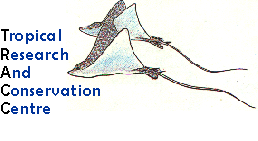|
|
|
|
Sarawak trawl fisheries
|
 |
|
|
|
|
The offshore environment around Borneo is dominated by the width of the continental shelf which is very wide in the Southwest, the Java and South China Seas, and becomes very narrow in the Northeast, the Sulawesi Sea. The Sarawak continental shelf has an area of 125,000 km2 of which 97,000 km2 is trawlable; while on the West coast of Sabah, the continental shelf has an area of 28,000 km2 with 14,000 km2 trawlable. Brunei has a small continental shelf of 8,600 km2.
The seabed over most of the continental shelf to the South and West of Borneo is silty mud and is inhabited by shrimp and other soft bottom communities. Carbonate sands dominate in coral reef areas and become more frequent as one travels North along either coast.
Fish communities on soft bottoms are more or less consistent over large areas of the seabed and seem to
depend on depth and sediments rather than biogeography.
|
|||||||||||||||||||||||||||||||||||
|
THE 1998 FISHERIES RESOURCES OF SARAWAK, EAST MALAYSIA
|
|
The fisheries of Brunei also emphasise
shrimp at 22% of effort but pelagic resources are also important at 23% of effort. The presence of the offshore oil installations of Brunei are of vital importance to the pelagic fishery, since these structures act as aggregating devices for both migratory and residential fish stocks. Fish aggregating devices
(FADs) are commonly used in both Sarawak and Brunei to concentrate fish for handline fisheries. Unfortunately, the fish resources of these FADs are relatively easily caught; a series of FADs in Brunei were opened for fishing 2 years after establishment, and were completely fished out within a few months. |
SEE ALSO:
|DESTRUCTIVE FISHING - ISSUES| |SABAH FISHERIES| |SARAWAK TRAWL FISHERIES| |PELAGIC FISHERIES| |REEF FISHERIES|
|CYANIDE FISHING| |BLAST FISHING| |GROUPERS| |SWEETLIPS| |HUMPHEAD WRASSE| |SNAPPERS| |SOFT BOTTOM FISH COMMUNITIES|

![]()